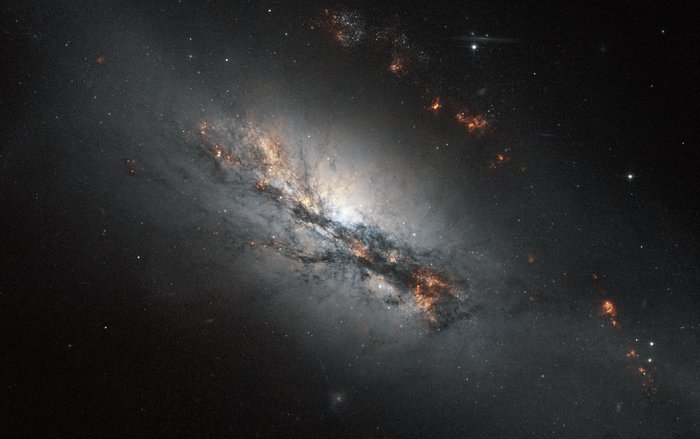
The NASA/ESA Hubble Space Telescope 22, August 2011,captured an image revealing NGC 2146, a galaxy undergoing significant distortion. Its striking feature is a dusty spiral arm positioned directly in front of its core, a result of severe warping and deformation. Classified as a barred spiral, NGC 2146’s shape is now dramatically altered, twisted up to 45 degrees from its natural state, indicating immense forces at play.
The most likely explanation for this distortion is gravitational perturbation from a neighboring galaxy, disrupting the orbits of NGC 2146’s stars over tens of millions of years. This observation suggests that we may be witnessing the culmination of a long-term process of galactic interaction and deformation.
NGC 2146 is currently experiencing intense periods of star formation, earning it the designation of a starburst galaxy. While this state is typical for barred spirals, the additional gravitational disruption it faces exacerbates the situation, leading to the compression of hydrogen-rich nebulae and the onset of stellar birth. Measuring approximately 80,000 light-years from end to end, NGC 2146 is slightly smaller than our Milky Way.
Situated roughly 70 million light-years away in the faint northern constellation of Camelopardalis (The Giraffe), it remained undiscovered until 1876, when German astronomer Friedrich Winnecke spotted it visually using only a 16 cm telescope. Despite its relatively faint appearance, it is observable with a moderate-sized telescope as an elongated blur of light.
The image of NGC 2146 was crafted using data obtained from the Wide Field Channel of Hubble’s Advanced Camera for Surveys. It combines images captured through a near-infrared filter (F814W), which appear in shades of blue and orange/brown, with images taken through a filter isolating the glow from hydrogen gas (F658N), depicted in red. To achieve a realistic color representation, an additional green channel was generated by blending the two sets of data. The total exposure times for these images were 120 seconds and 700 seconds respectively. The resulting image covers a field of view spanning 2.6 x 1.6 arcminutes.




